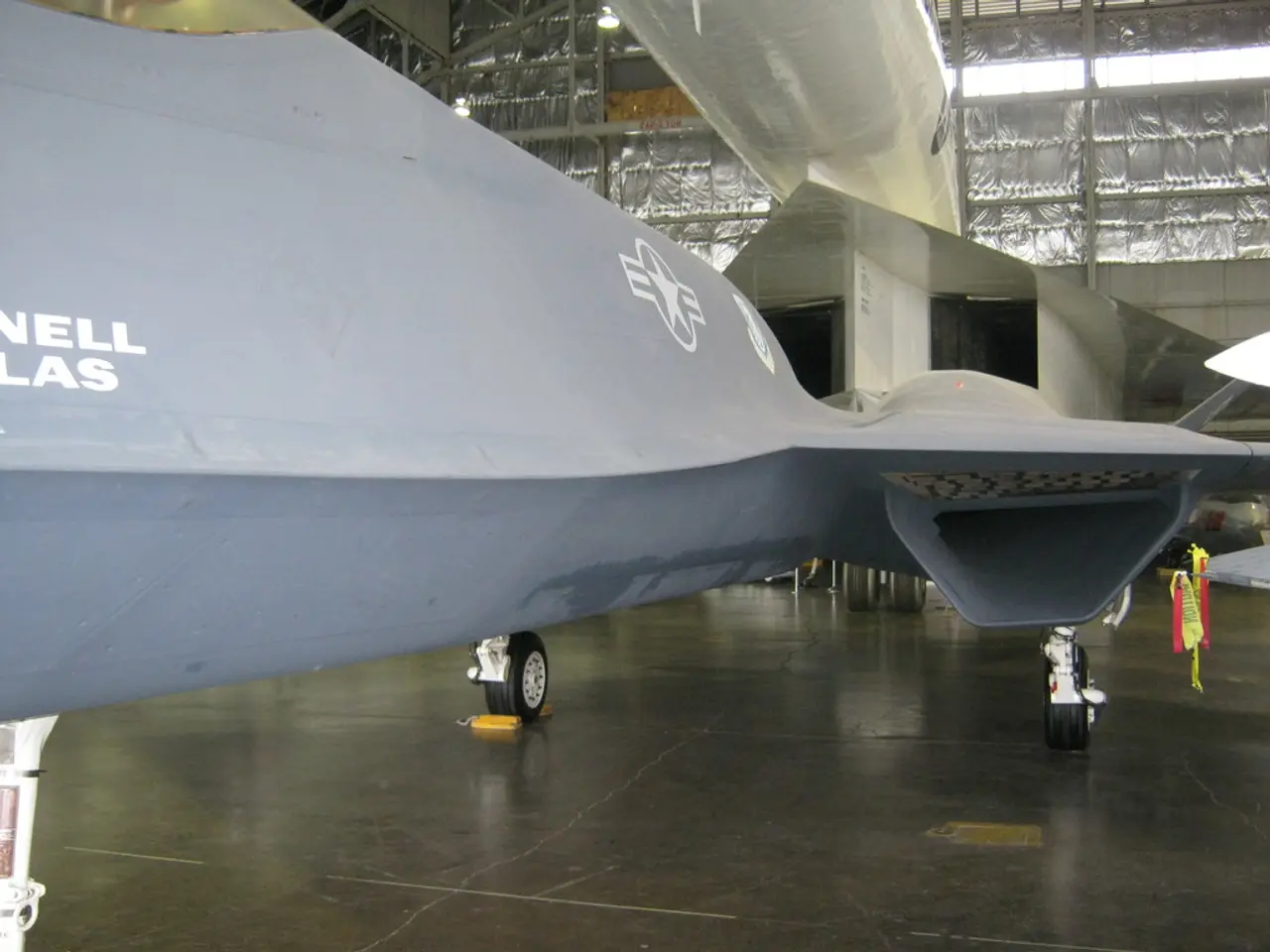Airbus' advanced high-voltage battery technology gears up for the EcoPulse flight test, aiming towards further applications.
Airbus has finalised the development of a high-voltage lithium-ion battery for its EcoPulse demonstrator, marking a significant step forward in the aviation industry's pursuit of sustainable propulsion systems.
The battery, one of the two electric sources on the demonstrator, is accompanied by an "e-Auxiliary power Unit" (e-APU) provided by Safran. This battery was designed entirely in-house by Airbus, with the high-voltage capability being unique, as it is not available in the aerospace or automotive industries.
The battery's development involved overcoming significant technical challenges, including ensuring high energy density, thermal management, safety under operational conditions, and integration within the aircraft’s hybrid electric system. The battery reaches lightweight, compact, high power, and energy density goals, thanks to years of research and development as part of Airbus' aircraft electrification and sustainability initiatives.
The battery is mounted under the fuselage and integrated with a reinforced aerodynamic fairing. It includes an active cooling system to maintain optimal temperature. The battery weighs around 350kg, achieves 800 Volts DC, and can deliver up to 350 kilowatts of power, making it suitable for driving EcoPulse's six electric propellers and similar to what would be needed for an airliner's non-propulsive secondary systems.
The collaborative EcoPulse project includes Airbus, Daher, Safran, France's Civil Aviation Research Council (CORAC), and French Civil Aviation Authority (DGAC). This battery's successful integration into the demonstrator's propulsion system has enabled the hybrid-electric distributed propulsion concept to progress from design to flight testing.
This validates the potential of lithium-ion technology to support advanced hybrid aerospace applications, demonstrating a pathway to more efficient and lower-emission aircraft propulsion. The battery's use in EcoPulse is part of Airbus' global strategy to develop a wide portfolio of technical and industrial skills for decarbonisation.
Hybridisation, enabled by batteries like this, is one of the enablers Airbus is considering for decarbonising future aircraft. The battery for EcoPulse features several thousand Lithium-Ion cells, each connected with wire bonding for safety. It measures approximately 2.3m long, 75cm wide, and 20cm deep.
The battery will be subjected to testing in Toulouse according to stringent aeronautical standards to evaluate performance, safety, and environmental attributes. Airbus is exploring the use of high-voltage batteries in airliners as part of its "micro-hybridisation" research. Julien Laurent, the Airbus Battery Project Leader, is leading the way in this innovative project.
[1] The specific technical and developmental details, such as precise battery chemistry, cell configuration, or thermal management solutions, are not outlined in the available sources. However, the collaboration among Airbus Defence and Space, Safran, and Daher in the EcoPulse project indicates pioneering work in adapting high-voltage lithium-ion batteries for aviation use in a demonstrator context. This represents a notable accomplishment in accelerating innovation towards sustainable aviation propulsion systems.
[1] The high-voltage lithium-ion battery, integral to Airbus' EcoPulse demonstrator, signifies a significant crossover of technology between the aerospace industry and the automotive sector, given that such high-voltage capabilities are not typically available in the aerospace or automotive industries.
[2] Leveraging innovative solutions in finance, this battery's development was part of Airbus' global strategy to invest in a wide portfolio of technical and industrial skills for decarbonisation, thus contributing to advancements in science and technology for more efficient and lower-emission aircraft propulsion.




